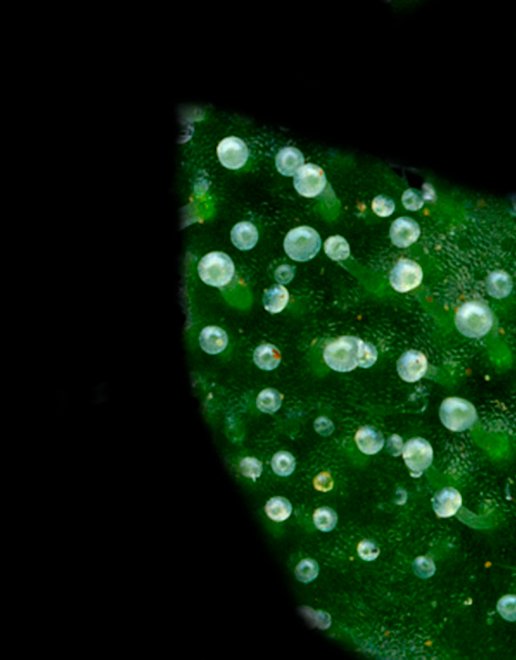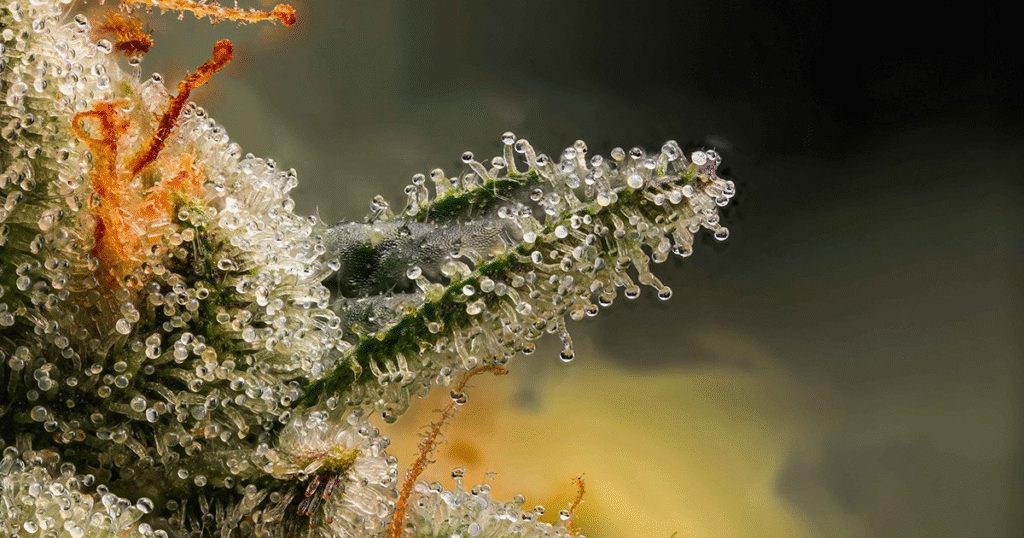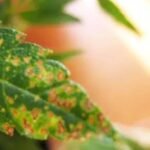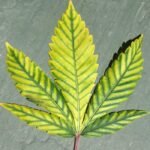Cannabis Trichomes are small extensions of the plant distributed throught its external tissue in various shapes that define the aroma, flavor and amount of cannabinoids and Terpenes the plant will contain.
Trichomes form primarily during the flowering stage and one of their first functions is to transport Plastids and Vacuoles from the stem to the leaves, where cannabinoids and Terpenes such as THC and CBD begin to be created. In addition to creating these substances, they also store them; some to a greater extent than others.
Plastids are organelles in plant cells and depending on the type, they are responsible for photosynthesis, pigment storage or nutrient storage.
Vacuoles are compartments that store water, salts, enzymes and other components, and they also contribute cell support through turgor pressure.
Trichomes Types
Bulbous Trichomes
Bulbous Trichomes cover the netire exterior surface of the plant and are the most numerous. However, they are imperceptible to the human eye due to their tiny size. They usually measure no more than 10 micrometers. A millimeter contains 1,000 micrometers, so observing them requires a jeweler’s loupe or even a microscope.

Sessile Capitate Trichomes
Sessile Capitate Trichomes are also present throughout most of the plant. They are larger than the previous Trichomes, measuring 25 to 100 micrometers and containing more cannabinoids than Bulbous Trichomes.
Their body consists of a stem ending in a head or bulb where small amounts of resin are stored.

Glandular, Tapered Trichomes
The size of these Trichomes makes them visible to the naked eye. At their peak, they can measure up to 500 micrometers (0.5 mm).
Just like Sessile Capitates, their body structure consists of a long stem and a bulb. The bulb contains large amounts of Cannabinoids and Terpenes, and these are the trichomes with the highest resin content.
This type of Trichome is mostly present in females and is concentrated mainly in the Calyxes, Petioles, Bracts and Bracteoles.
Furthermore, these Trichomes change color as the plant develops and matures. Knowing how to identify the different color ranges is important for knowing when to harvest.


Different Trichome Colors
The colors of Trichomes correspond to the stage of maturation of the marijuana plant and vary throughout the flowering phase, going from clear or transparent to cloudy or milky and finally to amber.

Clear Trichomes
Transparent Trichomes are the first to appear. They appear in the first phase of flowering; they are young and lack maturity. This is why plants with only transparent trichomes cannot be harvested.

Cloudy Trichomes
White or Milky Trichomes contain the highest levels of THC. The psychoactive effect produced by the flowers will be intense: more cerebral, energetic, and creative.

Amber Trichomes
The amber color occurs at the end of the flowering stage. At this point, the THC level drops slightly to combine with CBD levels, resulting in more relaxing and physical effects.
When the amber hue predominates in the Trichomes, it means the harvest period has passed and CBD is dominating the plant’s Cannabinoids and Terpenes. This is caused by excessive interaction with air and light, which causes the Trichomes Oxidation. The THC begins to degrade and will have lost much of its psychoactive effects.

Mixed
If you have two Trichome colors on a single plant, the effect will be mixed: high levels of THC combined with hints of CBD, combining a cerebral and physical effect. The trichome color will be a combination of amber and whitish.

Trichome colors can provide information about a plant’s THC and CBD levels, as well as its maturation stage. And their functions go beyond that.
Trichomes Functions
The multifunctionality of Trichomes goes beyond containing Cannabinoids and Terpenes and indicating when to harvest cannabis flowers.
One of their most important functions is to defend the plant from external agents such as strong winds. The layer of Trichomes that covers the plant acts as a shield against animals and insects. The bitter taste of Trichomes and their potent odor repels these living beings. The stickiness of the resin they contain also creates a barrier against fungi and other herbivores.
It also prevents the plant from dehydrating in environments or times of low humidity.
It is also a natural defense against overexposure to UV rays, which can seriously damage delicate tissues.
The more exposure to sunlight, the more Trichomes the crop will develop, but a greater number of trichomes does not imply a higher THC level in the buds of a crop, only more matter. The amount of THC will be determined by very different factors: the grower’s experience, lighting, various environmental factors, or the time of harvest.






